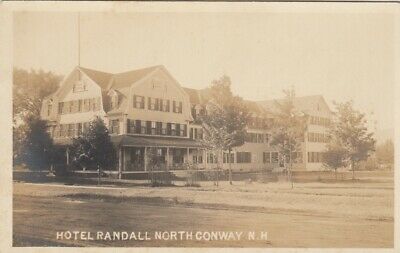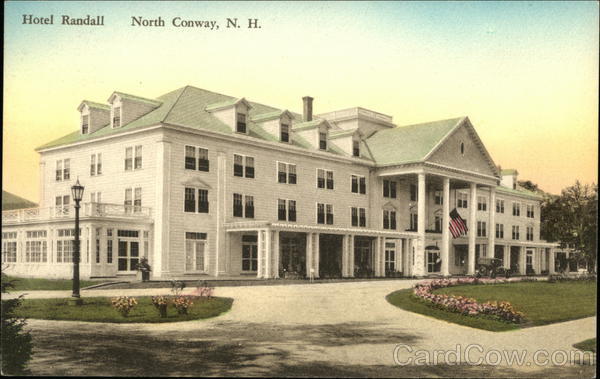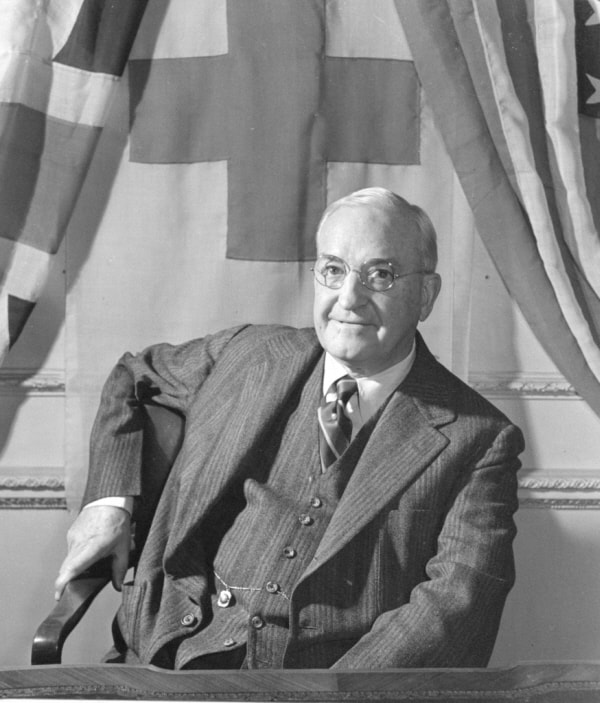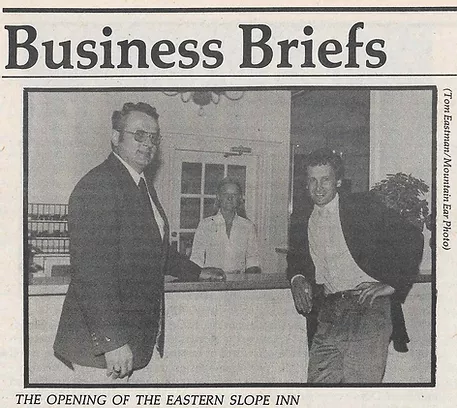History of the Eastern Slope Inn Resort in North Conway
An Overview
The extensive heritage of the Eastern Slope Inn Resort is intertwined with the breathtaking beauty of the North Conway and Mount Washington Valley. Shaped by the aspirations of four visionary individuals spanning three centuries, each bound by a shared love for the region, its history is a captivating saga. Initially conceived as an idea in the mid-1800s, it transformed into a definitive vision as the new century dawned. By the 1920s, it evolved into a fervent passion, only to experience a remarkable revival in the 1980s, marking its enduring legacy across different epochs.
The 1800’s & Melvin Seavey
In the early 1800s, Melvin Seavey constructed a modest boarding house on the premises, capable of hosting up to 50 guests. As the Civil War concluded and a fractured nation endeavored to mend and unite, the area started garnering attention as a sought-after vacation spot. This period coincided with the rise of the influential American literary Naturalist Movement, which profoundly impacted society during the turn of the century.
The Randall House
In 1854, James Thompson Randall purchased what was then a boardinghouse situated at the current resort site on the north end of Main Street, renaming it the Hotel Randall. Flourishing during America’s Gilded Age, the Randall House emerged as a favored destination for vacationers, coinciding with the Mount Washington Valley’s rise as a sought-after vacation spot for both the burgeoning middle class and affluent urban residents. Welcomed by train in June, guests arrived with hefty steamer trunks, intending to savor the entire summer season. Their inclination to explore the region resonates with the sentiments of Naturalist John Muir, who penned in 1873, “The mountains are calling, and I must go.” Later, in 1887, Randall constructed the Music Hall, now recognized as the Eastern Slope Inn Playhouse.
Unfortunately, the building was consumed by fire and burnt to the ground on November 19, 1902.
The Randall House: Part 2
Harry Randall, born in 1870 inside a hotel trunk, arrived four years prior to the railroad’s establishment in 1874. Growing up within his family’s expanding hotel, he became immersed in its operations. Unfazed by adversity, Harry took charge after his father’s passing in 1898. Determined, he reconstructed the hotel following a fire, unveiling the second iteration—the “New” Hotel Randall—on July 6, 1903. Embracing the trendy Dutch Colonial architectural style featuring a distinctive mansard roof, the hotel rapidly expanded. By 1916, an additional wing increased the room count to 50, boasting 33 rooms equipped with private baths. A brochure proudly touted the inn’s modern conveniences, encompassing “telephones, electric bells, electric lights, and steam heat.” The hotel’s growth persisted in 1917 with the acquisition of the adjacent Sunset Pavilion, a beloved summer retreat situated between the present-day hotel and the current location of the Eastern Slope Playhouse.
The second iteration of Hotel Randall operated as a year-round retreat, despite North Conway’s primary reputation as a summer destination. However, the town was swiftly gaining recognition as a burgeoning winter resort. Activities such as sledding and tobogganing behind the hotel garnered popularity, along with snowshoeing excursions into the woods behind the inn, offering guests a chance to relish coffee and hot doughnuts around a campfire.
The emergence of winter sports like skating, and sled-dog racing, and the burgeoning interest in skiing also captivated vacationers during the colder months. The Randall, known for its opulent amenities and central location, stood among the most stylish accommodations for visitors. This acclaim led to further expansion in 1921, with the addition of a new wing, increasing the hotel’s capacity to accommodate 150 guests.
During this period of economic prosperity, the region’s hotels flourished. Unfortunately, tragedy struck once more on November 20, 1925, when a devastating fire ravaged the inn, engulfing it in flames in less than three hours—almost precisely 23 years after the first fire had occurred.
The Randall House: Part 3
Construction of the third Hotel Randall swiftly commenced and within a month’s time, the new hotel welcomed its doors in July 1926, persevering to the present day. A front-page feature in the July 1926 North Conway Reporter praised the Randalls for their daring determination in erecting what was described as one of the most modern and advanced, if not the grandest, hotel in New Hampshire—a remarkable asset to the town, region, and state.
The new establishment was meticulously designed to minimize fire risks, incorporating fire stops in every wall, cement flooring in key areas like the kitchen and basement, exterior placement of boilers, wiring secured in protective cable, and a comprehensive sprinkler system throughout the premises. However, just three years after the grand gala ball celebrating the hotel’s opening, the Randalls, the hotel itself, and the entire country faced the staggering impact of the stock market crash, marking the onset of the Great Depression.
The ethos of vacationing underwent a seismic shift, with opulent retreats among the first casualties. The advent of automobiles also transformed travel dynamics, leading to the gradual replacement of grand hotels with guest cabins and later, motels. Despite Harry Randall and his sons’ efforts to persevere, the circumstances were dire. Harry resorted to extensive mortgage agreements, essentially managing the property on behalf of the banks.
Harvey Gibson & The Eastern Slope Inn
Following his daughter Whitney Bourne’s ski lesson at Carroll Reed’s new ski school in Jackson in 1936, Harvey Dow Gibson was struck by the potential of skiing as a boon for North Conway, his hometown. This marked the inception of the modern era for North Conway’s iconic landmark, the Eastern Slope Inn. In the summer of 1937, Gibson, a native of North Conway and a graduate of Fryeburg Academy and Bowdoin College, purchased the Eastern Slope Inn, returning to his roots after a successful career in New York’s financial sphere as the president of Manufacturers Trust Company.
Inspired by memories of the historic ski rivalry between North Conway and Jackson, Gibson was determined to transform North Conway into the premier ski destination of the Eastern Slope Region, now known as the Mt. Washington Valley. Quietly securing acreage on the western side of Cranmore Mountain in January 1937, Gibson announced plans to operate the inn year-round as a basecamp for hearty skiiers. Initiating local inventor George Morton of Glen to design a ski lift, Gibson’s efforts led to the creation of the Skimobile in December 1938. Further expanding his influence, he acquired Reed’s ski schools in Jackson and Cranmore in the summer of 1938. Leveraging his international connections, Gibson facilitated the release of Austrian ski legend Hannes Schneider from Nazi custody, bringing him to North Conway in February 1939.
Under Gibson’s leadership, both the inn and Cranmore thrived, attracting skiers to the village via snow trains. Gibson, who headed the 1939 New York World’s Fair, brought the Swiss Orchestra to perform regularly at the inn, often joining in himself as a mandolinist. A showman known for generating positive publicity, Gibson organized tennis and golf tournaments, and horse shows in Schouler Park and Cranmore, and used his influence to attract celebrities like Babe Ruth, tennis great Bill Tilden, and Henry Ford II to the inn.
Joe Berry Enters The Scene
After Harvey Dow Gibson’s passing in 1950, the hotel underwent several ownership changes until 1974, facing economic challenges that led to its eventual bankruptcy and closure. Remaining dormant for years, the property was acquired in 1977 by Eastern Mountain Sports, reopening as a retail store for outdoor sporting goods and a restaurant.
In 1980, Joe Berry, a local resort developer, and passionate skier deeply rooted in the Mount Washington Valley, recognized the untapped potential of this historic inn. Fueled by a profound attachment to the community and a genuine love for the region, Berry embarked on a mission to restore the inn to its former glory. The Eastern Slope Inn Resort underwent a rebirth, returning to its grandeur and elegance in 1981—marking 55 years from its original opening.
On Friday, July 17, 1981, the Eastern Slope Inn reinitiated its hotel operations, precisely fifty-five years after its initial opening. Recognized and honored by its inclusion on the National Register of Historic Places in 1982, the inn persists as an integral component of the local ski landscape.
The inn’s evolution into the contemporary era proceeded with the implementation of a vacation ownership program. This innovation allowed vacationers to experience the inn in various ways, whether for a night, a weekend, or an entire week, providing flexibility in their stay options.
Present Day
Presently, the grand edifices of the Eastern Slope Inn Resort extend a warm welcome to visitors hailing from across the globe. The Resort’s storied charm and acclaimed legacy shine through its steadfast dedication to guest contentment and its deep affection for the greater North Conway and Mount Washington Valley region. Upon stepping into the majestic foyer, guests are transported to an era of opulence where brass chandeliers cast a comforting radiance, enhancing the intricate detailing evident in the resort’s architecture. This splendor is complemented by period furnishings and refined seating areas. A favorite gathering spot among guests, the meticulously restored, handcrafted brick fireplace serves as a hub for reflection on the day’s adventures or for leisurely conversations.
The timeless allure of the Eastern Slope Inn Resort is embodied in its 200 rooms, set across a sprawling 30-acre expanse and encompassed within 20 distinct buildings. Seamlessly integrated into the rich tapestry of North Conway Village and the wider Mount Washington Valley, the resort bears the indelible marks of its historical significance. Despite the passing of decades since its establishment, the unwavering commitment to ensuring guests arrive with eagerness and depart with cherished memories remains as resolute today as it was at the resort’s inception.






